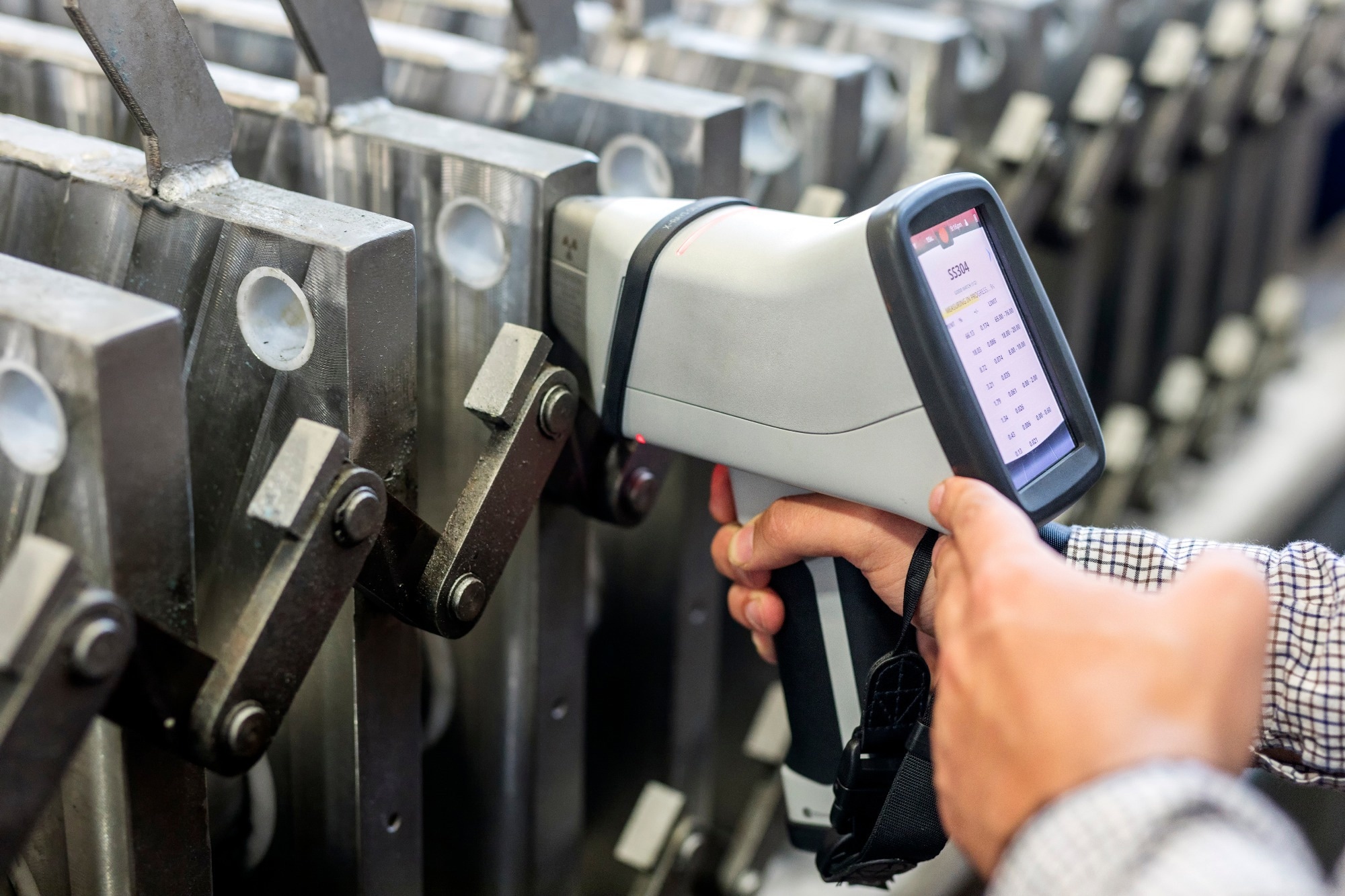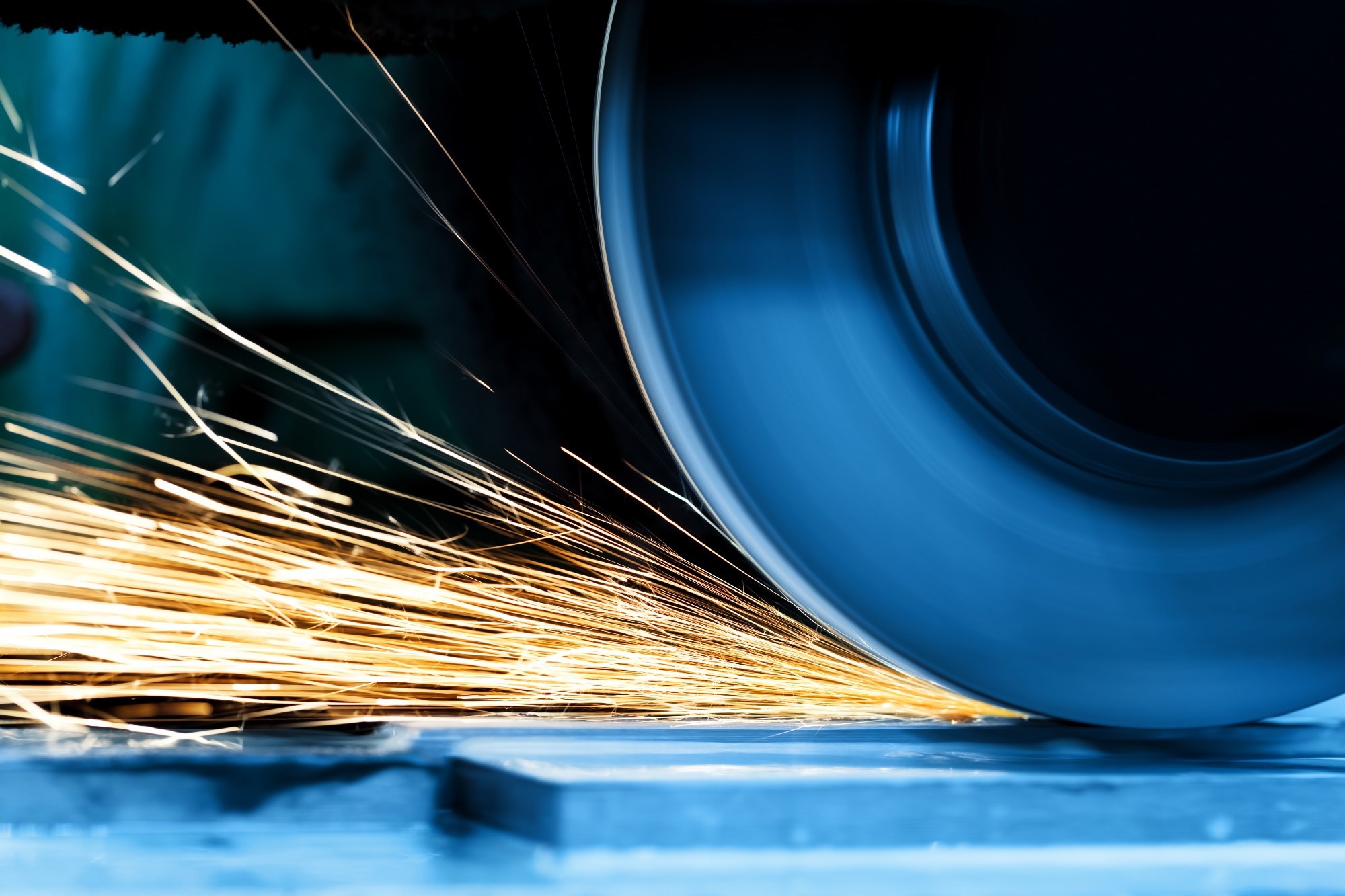Reviewed by Lexie CornerUpdated on Apr 23 2025
Stainless steel is used across industries, as it is strong and resistant to corrosion. But not all stainless steel is the same.
There are over 50 recognized stainless steel grades, generally grouped into families like austenitic, ferritic, and martensitic. Knowing how to test stainless steel is important for manufacturing, repairs, and recycling.
Testing methods range from simple at-home checks to advanced laboratory analyses, depending on the accuracy needed. In this guide, we’ll explain approaches for identifying stainless steel grades, from quick DIY tests to professional techniques.

Image Credit: Funtay/Shutterstock.com
Why test stainless steel?
When metal parts of different grades are stored together, they can often lose their original labels or get mixed up. Sorting and identifying different grades of stainless steel is, therefore, vital to confirm that you have the correct material.
Common reasons to test stainless steel include:
- Identifying unknown grades
- Checking corrosion resistance
- Distinguishing stainless from mild steel
- Confirming the authenticity of the alloy
By understanding these reasons, you can choose an appropriate test method. The following sections cover how to test stainless steel at home or using advanced identification methods.
How to Test Stainless Steel at Home
You don’t always need a lab to check stainless steel. Several simple tests can be done with household items or basic tools. These “field tests” won’t pinpoint the exact grade in all cases, but they help narrow down the type of steel.
With a Magnet
One of the easiest checks for identifying stainless steel is using a magnet, as different stainless steel families have different magnetic properties:
- Austenitic stainless steels (e.g., 304, 316) are generally non-magnetic in the annealed state, though they may develop a weak magnetic pull if cold-worked (e.g., bent or hammered).
- Ferritic and martensitic stainless steels (e.g., 430, 410) and carbon steel are magnetic and will attract a magnet.
- A weak magnetic attraction doesn’t rule out a 300-series stainless steel, but a strong magnetic pull usually indicates a 400-series stainless steel or carbon steel.
The magnet test is a fast and effective way to categorize common stainless steel types, especially for sorting scrap metals. However, it doesn't identify the exact grade, as some stainless steels (like duplex steels) may be partly magnetic.
For general purposes, non-magnetic suggests 304/316, while magnetic points to 430 or mild steel.
Download your PDF copy now!
Acid Test (Nitric Acid)
The nitric acid test is a straightforward method to confirm stainless steel, as stainless steels exhibit high resistance to nitric acid, while most non-stainless steels react vigorously.
Procedure
In a well-ventilated area, place a drop of strong nitric acid (65-70 % concentration) on a small, cleaned area of the metal. Alternatively, you can submerge a sample in nitric acid. It's helpful to test a known stainless steel and mild steel sample as controls.
Reaction
- Non-stainless steel (e.g., carbon steel) will react quickly with nitric acid, producing a pungent brown fume, and the metal may show corrosion or slight erosion.
- Stainless steel will remain virtually unaffected, showing no colored fumes, and the acid will retain its clarity.
Safety
Nitric acid is highly corrosive and toxic. Always wear gloves and eye protection. After the test, neutralize the metal surface (e.g., with a baking soda solution) to remove all acid.
The nitric acid test is useful for distinguishing stainless steel from mild steel, but cannot differentiate stainless grades. If there’s no reaction, you can confidently conclude the metal is stainless steel.
Spark Test (Grinding)
If you have access to a bench grinder or angle grinder, a spark test can help identify steel types by observing the spark patterns produced during grinding. Different steels yield distinctive spark characteristics.
Carbon steels
Carbon steels, like mild steel or high-carbon tool steel, produce bright, white-yellow sparks that branch out. Mild steel gives long sparks with tiny forks, while high-carbon steel creates shorter, dense spark streams with bursting, bushy patterns.
Austenitic Stainless Steels
These produce darker, orange-to-straw-colored sparks with few or no forks. The spark stream is generally shorter and thinner, with a subdued orange tone due to alloy elements like chromium and nickel, which dampen the sparking.
Ferritic/Martensitic Stainless Steels
These produce fewer sparks than carbon steel, but more than austenitic stainless steels. For example, 430 ferritic stainless steel produces moderately long, dim sparks with small forks, while martensitic stainless steel (like 420) shows more pronounced sparks but still fewer than plain carbon steel of similar carbon content.
This test requires practice and a controlled lighting environment (a dim area is ideal for seeing spark details clearly). Always wear eye protection and be mindful that grinding will slightly mar the piece (it’s a semi-destructive test).

Image Credit: PHOTOCREO Michal Bednarek/Shutterstock.com
Appearance and Scratch Test
Visual Cues
Stainless steel typically has a bright, silvery sheen with a slight bluish tint when polished, while mild steel tends to be duller or have a blue-black mill scale.
If exposed to the elements, stainless steel may show slight tarnish or tea-colored stains, whereas carbon steel will rust with orange-brown spots. Reddish rust on stainless could indicate a lower-grade stainless steel (like 430) or a non-stainless metal.
Surface Finish
Stainless steel is often sold with a clean, smooth finish, such as a satin look on appliances. Plain steel may be painted or coated, or have a rough, scaly surface if untreated. If chrome plating is suspected, check edges or worn areas. Genuine stainless is solid and homogeneous; plated steel might show flaking or a different metal underneath.
Scratch Test
Use a file or knife tip to lightly scratch an inconspicuous area. Stainless steel is generally harder than mild steel and harder to scratch. A scratch on surface-plated metal (like chrome-plated steel) may expose a different metal underneath or even rust over time, while genuine stainless will remain consistent throughout.
Sparkle test
Stainless steel may contain manganese sulfide inclusions, which appear as tiny sparkly specks when ground or broken. Pure carbon steel fractures with a dull, matte appearance. However, this test is more for experts and not easily done by a layperson.
While appearance alone isn’t definitive, combining visual examination with other tests (magnet test, corrosion test) can provide a clearer identification.
Corrosion Test
Salt Water Test
To test corrosion resistance, mist a small area of the steel (or a scrap piece) with saltwater (1 teaspoon of salt in a cup of warm water) and leave it in a warm place for 6–24 hours.
- Carbon steel will show rust (orange-brown spots) quickly, often within hours, as the saltwater evaporates and concentrates.
- Stainless steel resists rusting due to its passive chromium oxide film. Higher grades like 304 may show no change, or at most, slight discoloration that wipes off. Lower grades like 430 may develop slight rust spots after extended exposure, but still much less than carbon steel.
Vinegar or Bleach Test
If saltwater isn’t available, you can use vinegar (acetic acid) or bleach as mild corrosive agents.
- Vinegar won’t rust stainless steel, but it can cause mild rusting on carbon steel after a day or two.
- Bleach causes rapid rusting on carbon steel, while stainless steel may show only staining, but no rust if rinsed quickly. Prolonged exposure to bleach, however, can damage stainless steel, so avoid soaking.
Always rinse and clean the metal after these tests to prevent prolonged exposure to corrosive agents, particularly bleach, which can pit stainless steel over time.
Advanced Stainless Steel Identification Methods
If simple tests don’t give a conclusive identification or you need to pinpoint the exact grade of stainless steel, more advanced methods are available. These typically require specialized chemicals or instruments, but can differentiate stainless grades with higher accuracy.
Molybdenum Spot Test (Mo Test)
The molybdenum (Mo) spot test detects the presence of molybdenum in stainless steel, which distinguishes grades like 316 (containing 2–3 % Mo) from 304 (essentially Mo-free).
There are commercial stainless steel detection liquids specifically formulated for this test (e.g., “Decapoli 304/316” solution)?. The solution typically contains chemicals like potassium thiocyanate and ferric chloride in acid.
Procedure
Clean and dry a small area of the steel. Place a drop of the testing solution on the surface and compare it to known 304 and 316 samples. Let the drops sit for 2–4 minutes.
Result
- Mo-containing steel (e.g., 316L, 317, 904L) will cause the test drop to darken, often turning blue-gray or dark brown.
- Mo-free steel (e.g., 304, 430) will keep the drop yellow or show only slight change. A darkened drop indicates the presence of molybdenum. Even low levels of Mo can cause a slight reaction, with 316 showing a strong positive result, while 304 stays negative.
However, a positive result only confirms the presence of Mo. You may need other context or tests to fully identify the grade.
Safety
Handle the acidic solution with care to avoid skin contact. Perform the test at room temperature, as low temperatures can slow the reaction.
How to identify 316 and 304 in cheaper way with Molybdenum test kit by HardwareMISE
Spectrometer / XRF Analyzer
To identify stainless steel grades precisely, spectrometric methods such as XRF (X-ray fluorescence) or OES (optical emission spectroscopy) are used.
Handheld XRF analyzers provide a quick, nondestructive way to determine elemental composition. They can identify grades like 304 or 316 by detecting levels of chromium, nickel, and molybdenum. For applications requiring carbon detection (e.g., distinguishing 304 from 304L), OES is preferred.
These techniques are widely used for Positive Material Identification (PMI) in industries where material traceability is critical.
Hardness and Heat Treatment Response
Some stainless steels can also be identified by their mechanical properties and response to heat.
Austenitic steels (e.g., 304, 316) are non-hardenable by heat treatment and remain relatively soft, though they can work-harden when cold rolled. In contrast, martensitic grades (e.g., 410, 420) can be heat-treated to high hardness, making them suitable for knives and tools. Ferritic stainless steels such as 430 are also relatively soft and may become brittle under sharp bending.
Hardness tests or observing heat treatment response can help distinguish these categories, though such tests are less common outside lab settings.
Summary: How to Identify Different Stainless Steel Grades
| Grade |
Magnetic |
Mo Present? |
Test Notes |
| 304 (AISI 304) |
No |
No (0 % Mo) |
Magnet test: usually no attraction.
Nitric acid: no reaction (stainless).
Molybdenum spot test: no color change (negative)
Spark test: short, orange sparks with no forked bursts. |
| 316 (AISI 316) |
No |
Yes (~2–3 % Mo) |
Magnet test: no attraction (unless heavily cold-worked).
Nitric acid: no reaction (stainless).
Molybdenum spot test: color change (positive)
Spark test: short, orange sparks with no forked bursts (perhaps even fewer sparks due to Mo). |
| 430 (AISI 430) |
Yes |
No (0 % Mo) |
Magnet test: attracts magnet strongly.
Nitric acid: no reaction (stainless).
Molybdenum spot test: no color change (negative)
Spark test: more sparks than 304 (longer white-ish sparks with small forks), but not as many as carbon steel. |